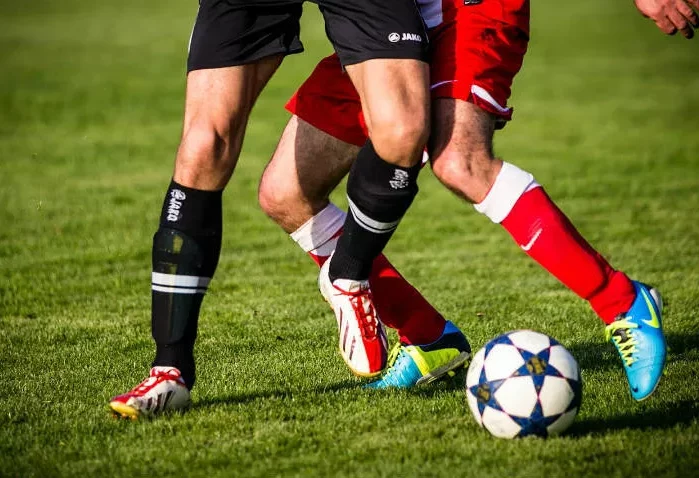In soccer, the sweeper is a specialized defensive position designed to act as the last line of defense before the goalkeeper. Often referred to as the libero (Italian for “free”), this player operates behind the primary defensive line, “sweeping up” loose balls, intercepting passes, and neutralizing attackers who breach the initial defense. Unlike traditional defenders who mark specific opponents, the sweeper enjoys positional freedom, relying on anticipation and tactical awareness to protect the goal.
This role demands a unique blend of skills: sharp decision-making, composure under pressure, and the ability to read the game several moves ahead. Historically, sweepers were pivotal in systems like catenaccio, a defensive strategy popularized in Italy during the 1960s. While the position has declined in modern soccer, its influence persists in today’s ball-playing defenders and hybrid defensive roles.
Key Responsibilities of a Sweeper
Covering Defensive Gaps
The primary duty of a sweeper is to cover spaces left by other defenders. If an opponent slips past a center-back or full-back, the sweeper steps in to tackle, block shots, or clear the ball. This requires constant communication with teammates to maintain defensive shape.
Initiating Counterattacks
Unlike traditional defenders, sweepers often carry the ball forward or deliver precise long passes to launch counterattacks. Franz Beckenbauer, one of the most famous sweepers, revolutionized the role by blending defensive grit with playmaking flair.
Organizing the Defense
A sweeper acts as an on-field leader, directing teammates to mark opponents, hold the offside line, or adjust positioning based on the flow of the game. This role demands vocal authority and a deep understanding of tactics.
Neutralizing Set-Piece Threats
During corners or free kicks, sweepers position themselves strategically to clear crosses or tackle opponents who escape their markers.
Historical Evolution of the Sweeper Position
Origins in Catenaccio
The sweeper became prominent in the 1960s with Helenio Herrera’s catenaccio system at Inter Milan. This tactic relied on a tightly organized defense, with the sweeper mopping up attacks and triggering quick transitions.
The Libero’s Golden Era
The 1970s and 1980s saw sweepers like Beckenbauer and Franco Baresi redefine the role. Beckenbauer’s “attacking sweeper” style led West Germany to World Cup glory, while Baresi’s intelligence and tackling made him AC Milan’s defensive anchor.
Decline in the Modern Era
By the 1990s, zonal marking, high defensive lines, and pressing tactics reduced the need for a dedicated sweeper. Coaches like Arrigo Sacchi favored flat back-four systems, emphasizing teamwork over individualistic roles.
Famous Sweepers in Soccer History
Franz Beckenbauer
Nicknamed Der Kaiser, Beckenbauer combined elegance and tactical genius. His ability to dictate play from deep positions set the standard for future sweepers.
Franco Baresi
AC Milan’s legendary captain mastered the art of reading the game. His timely interceptions and leadership were key to Milan’s dominance in the 1980s and 1990s.
Gaetano Scirea
A less flashy but equally effective sweeper, Scirea anchored Juventus and Italy’s defense with his calmness and precise tackling.
The Sweeper vs. Modern Center-Backs: What’s the Difference?
Modern center-backs typically operate in pairs or a back three, focusing on zonal marking and physical duels. Sweepers, however, prioritize spatial coverage and versatility. For example:
Positioning: Sweepers roam freely; center-backs hold defined zones.
Role in Build-Up: Sweepers often start attacks, while center-backs prioritize short passes to midfielders.
Tactical Flexibility: Sweepers adapt to opponents’ movements; center-backs follow structured plans.
Coaching the Sweeper: Skills and Training Drills
Essential Skills
Anticipation: Drills simulating split-second decision-making.
Passing Accuracy: Long-ball exercises to replicate game scenarios.
Leadership: Role-playing as the defensive coordinator during practice matches.
Sample Drills
Overload Simulations: Defend against waves of attackers to improve composure.
Interception Challenges: React to unexpected passes in crowded areas.
The Decline of the Sweeper in Modern Soccer
Tactical Shifts
High defensive lines and offside traps minimize gaps for sweepers to cover. Teams now prefer defenders who press aggressively rather than sit deep.
The Rise of Ball-Playing Defenders
Modern center-backs like Virgil van Dijk embody sweeper traits—leadership, vision, and passing—but within a zonal framework, eliminating the need for a standalone libero.
Conclusion
The sweeper’s legacy lives on in modern defenders who blend defensive grit with creative passing. Though the position has faded, its principles—anticipation, leadership, and tactical intelligence—remain vital to soccer’s evolution. Understanding this role offers insight into how defensive strategies adapt to the ever-changing demands of the game.
Realted topics:

